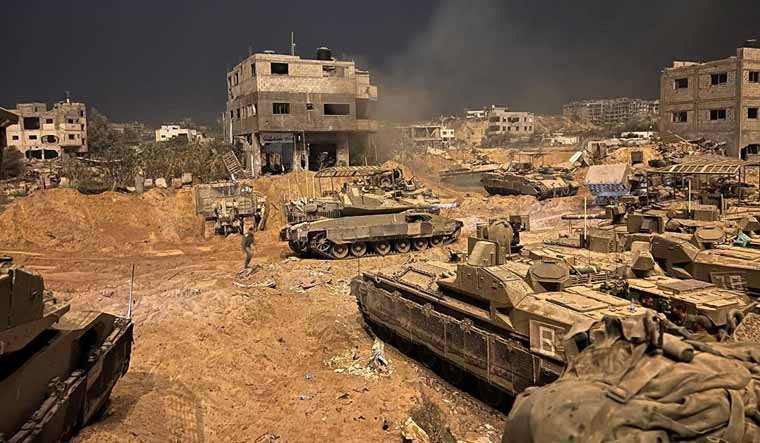With Israel Defense Forces (IDF) tanks and armoured carriers accompanied by sappers moving deep into the Gaza Strip on Tuesday, the imminence of an urban guerilla warfare—painful and long—looms on the horizon of the war-ravaged battle-zone.
On Tuesday, Israeli air force planes had bombed the Jabalia camp—the biggest camp for refugees in Gaza—killing several dozens of Palestinians.
The attack on the refugee camp drew harsh criticism from Saudi Arabia, with its foreign ministry saying that the attack on Jabalia had “caused the death and injury of a large number of innocent civilians”.
Several countries like Pakistan and Egypt condemned the Israeli strikes while Bolivia became the first Latin American country to break diplomatic ties with Israel even as Colombia and Chile called their ambassadors home for ‘consultations’.
While IDF’s assault thrust focused on northwest Gaza along the Red Sea coast and in the Beit Hanoun area northeast of Gaza City, there were increasing confrontations between the IDF and Palestinian outfits in central Gaza. On the surface, there may be an IDF plan to encircle the densely-populated Gaza City.
At the same time there was increasing evidence of close collaboration between fighters of the al Qassem Brigades, Saraya al Quds Brigades, and al Aqsa Martyrs’ Brigade—all Palestinian fighting outfits that seemed to have closed ranks against a common adversary.
From here, the fight will get tougher because there will be a fight for control of every street and every lane and advances will be made more difficult along the congested lanes where danger will lurk at every corner.
Tanks and heavy equipment will be increasingly difficult to operate because of lack of space. Here light and highly mobile fighters armed with light weapons will have the advantage.
Several fronts have also opened up, with Israel having to contend with the growing involvement and attacks by the Lebanon-headquartered Hezbollah militia in the north and the Iran-backed Shiite Houthi militia based in Yemen.
On Wednesday, the Rafah crossing to Egypt was opened for the first time since the October 7 attacks, allowing foreign-passport holders and seriously wounded Gazans to move out.
An estimated 8,00,000 Palestinians in Gaza have already fled to the south after the IDF issued a clarion call to shift south, leading to humanitarian concerns arising from overcrowding.



